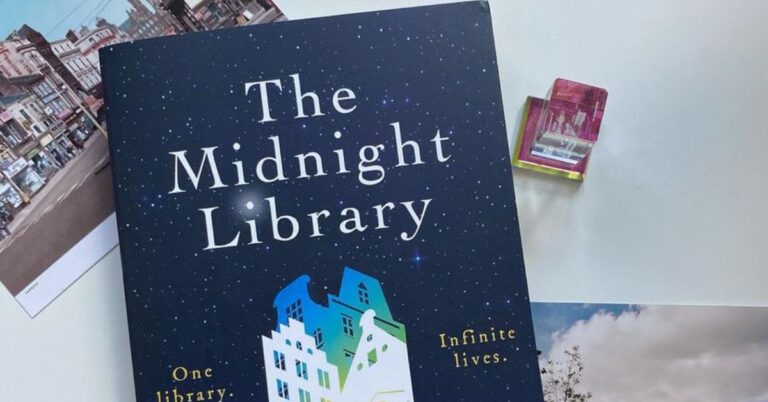25 Breathtaking U.S. Libraries That Are Worth Exploring
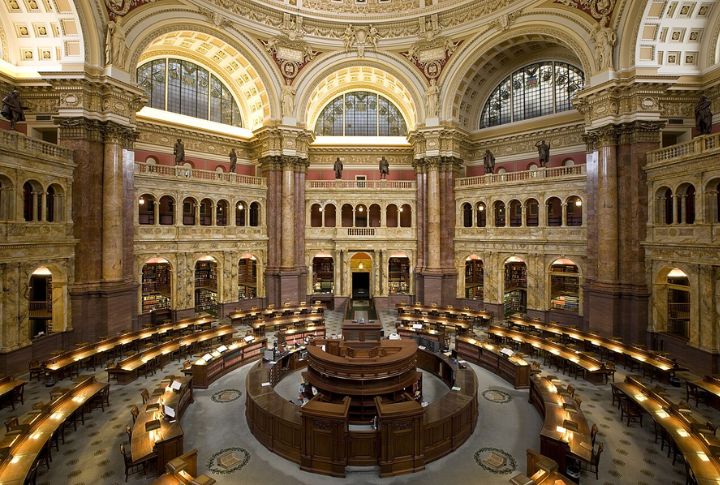
Beyond their shelves of books, libraries can be masterpieces of history and design. Across the U.S., many serve as cultural landmarks, offering art-lined halls, rare collections, and reading rooms that rival cathedrals. These breathtaking spaces invite more than quiet study; they offer an experience. Here are 25 you’ll want to wander through at your own pace.
Library Of Congress (Washington, D.C.)
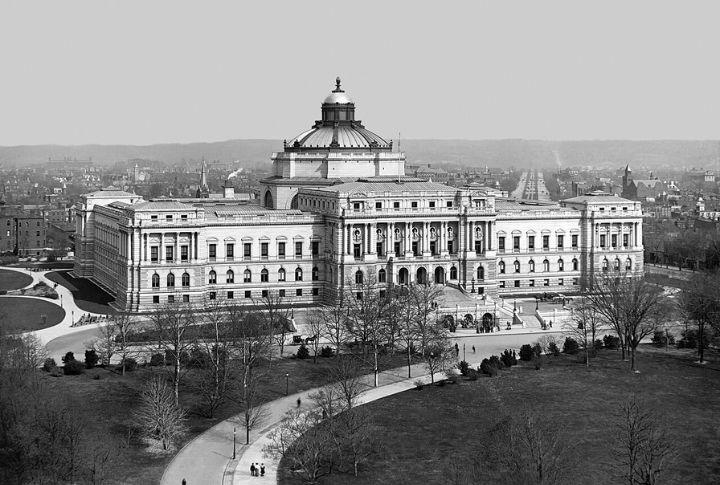
The Library of Congress is the world’s most expansive library, holding over 178 million items across three buildings. The Thomas Jefferson Building features a breathtaking Beaux-Arts interior with a soaring dome and elaborately painted ceilings. Opened in 1897, it also houses the Gutenberg Bible and Thomas Jefferson’s library.
Seattle Central Library (Seattle, Washington)
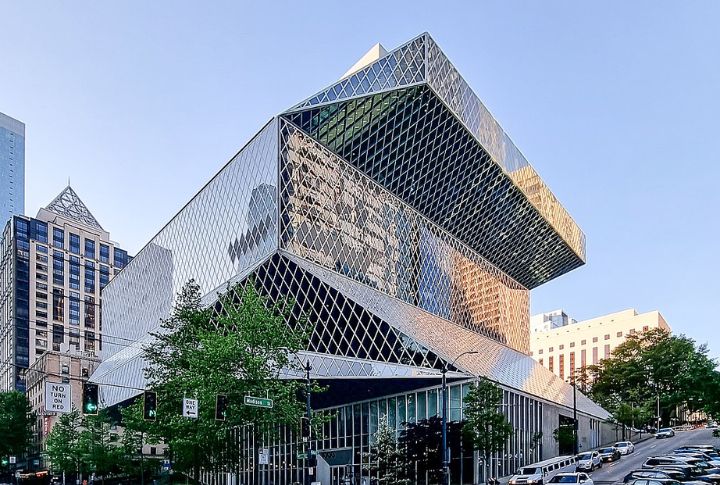
A bold departure from traditional design, the Seattle Central Library opened in 2004 with a striking glass-and-steel exterior. Designed by Rem Koolhaas, the building includes an innovative “Books Spiral” that wraps four levels of nonfiction shelving into a continuous path. One million items live inside its angular, light-filled spaces.
Harold Washington Library Center (Chicago, Illinois)
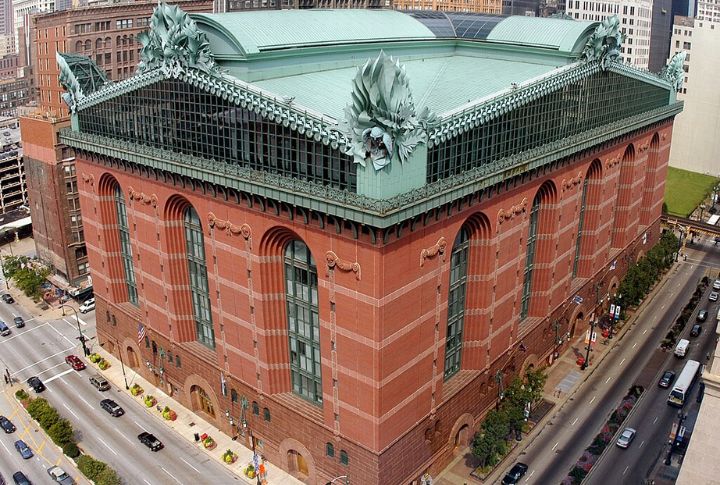
Massive, leafy roof sculptures grace this 1991 postmodern building. Spanning an entire city block, the Harold Washington Library honors Mayor Harold Washington, Chicago’s first Black mayor, and serves as the system’s central hub. More than 1.1 million books, public art installations, and a sun-drenched Winter Garden atrium make it a cultural centerpiece.
George Peabody Library (Baltimore, Maryland)
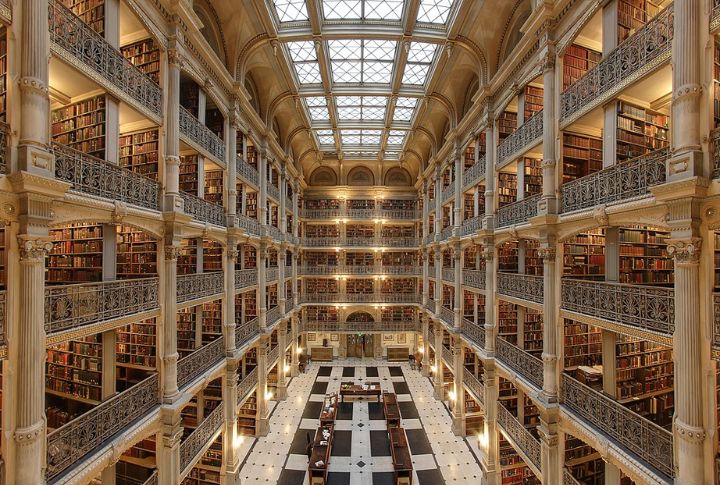
Inside this structure, five tiers of cast-iron balconies rise toward a massive skylight. Opened in 1878 and part of Johns Hopkins University, the George Peabody Library holds over 300,000 volumes, many focused on 19th-century studies. The space regularly hosts events beneath its soaring interior.
Beinecke Rare Book & Manuscript Library (New Haven, Connecticut)
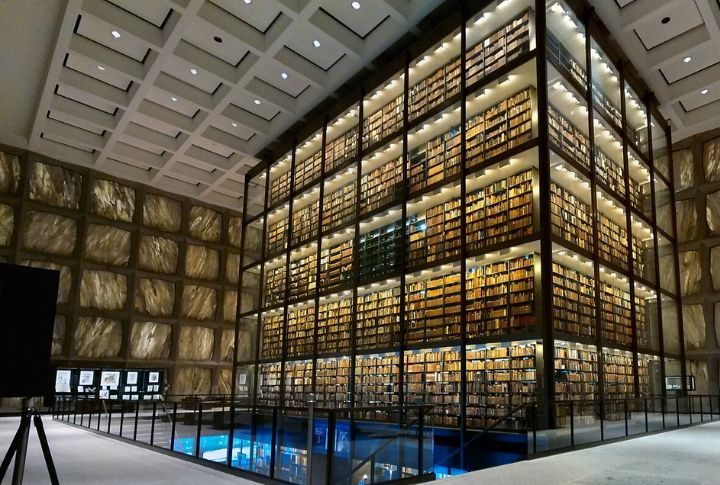
This structure appears to be a solid stone block from the outside, but the walls of Beinecke are actually translucent Vermont marble. This Yale library, completed in 1963, protects rare volumes using diffused natural light. A suspended glass tower showcases 180,000 books, including the Gutenberg Bible and the Voynich Manuscript.
New York Public Library, Stephen A. Schwarzman Building (New York, New York)
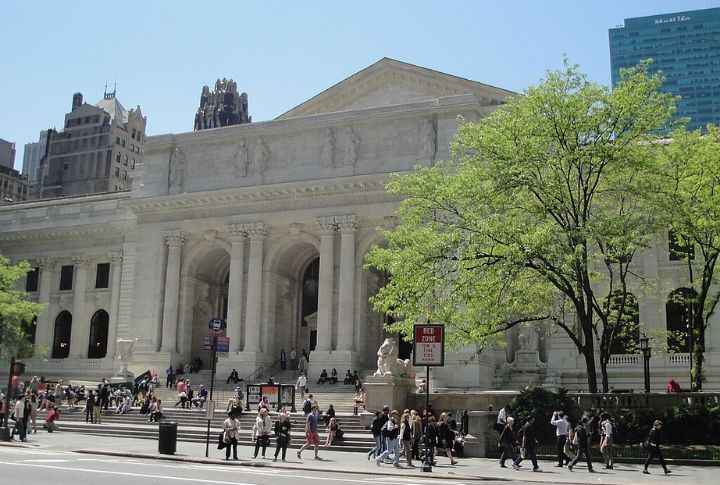
Two lions named Patience and Fortitude flank the entrance to this 1911 Beaux-Arts icon in Midtown Manhattan. The Rose Main Reading Room stretches nearly a football field long, illuminated by chandeliers and celestial murals. Inside are over 15 million items, including Jefferson’s draft of the Declaration.
Los Angeles Central Library (Los Angeles, California)

With its tiled pyramid crown and Egyptian-influenced motifs, this 1926 edifice fuses ancient styles with Art Deco flair. Architect Bertram Goodhue envisioned it as a “cathedral of books.” Holding over 6 million volumes, it includes the Tom Bradley Wing—an eight-story addition completed in 1993.
Boston Public Library (Boston, Massachusetts)

The Boston Public Library is the U.S.’s first large free municipal facility and a cultural landmark since 1848. Its McKim Building, completed in 1895, features Renaissance Revival architecture, marble lions, and murals by John Singer Sargent. The stately Bates Hall stretches 218 feet under a barrel-vaulted ceiling.
Morgan Library & Museum (New York, New York)
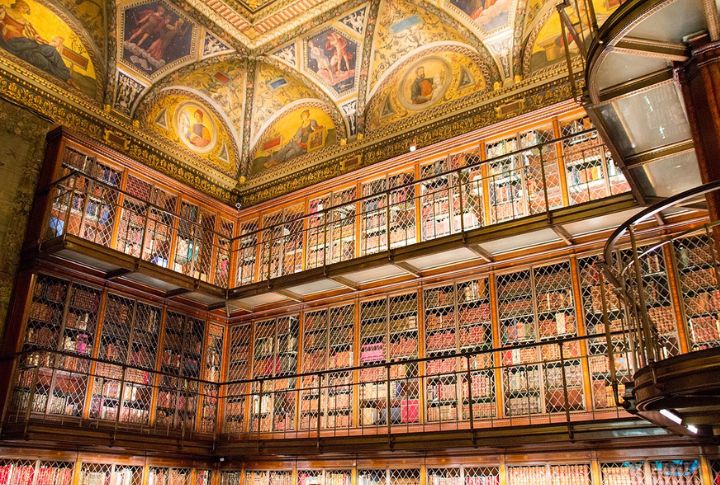
Before becoming a public institution in 1924, this was J.P. Morgan’s private sanctuary for rare manuscripts. Today, the complex combines classical interiors with a sleek glass addition by Renzo Piano. Among its treasures are Gutenberg Bibles, handwritten Bach scores, and letters from literary giants. Its Renaissance-style rooms remain untouched.
Geisel Library (San Diego, California)

Nothing else on the UC San Diego campus resembles the Geisel Library’s Brutalist silhouette. Designed by architect William Pereira in 1970, it is named after Theodor Geisel, better known as Dr. Seuss. The building’s bold, cantilevered structure houses 7 million items and Seuss’s personal archive. Its design often draws comparisons to futuristic sci-fi settings.
Fisher Fine Arts Library (Philadelphia, Pennsylvania)
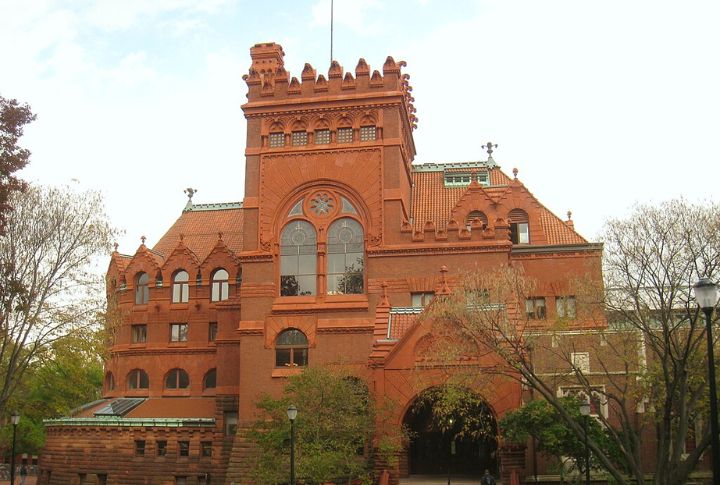
Rising in bold red sandstone and terra-cotta, the Fisher Fine Arts Library was designed by architect Frank Furness in 1890. Vaulted ceilings and narrow spiral staircases wind through its richly detailed interior. Located on the University of Pennsylvania campus, it supports fine arts research with rare collections and historic design.
Salt Lake City Public Library (Salt Lake City, Utah)
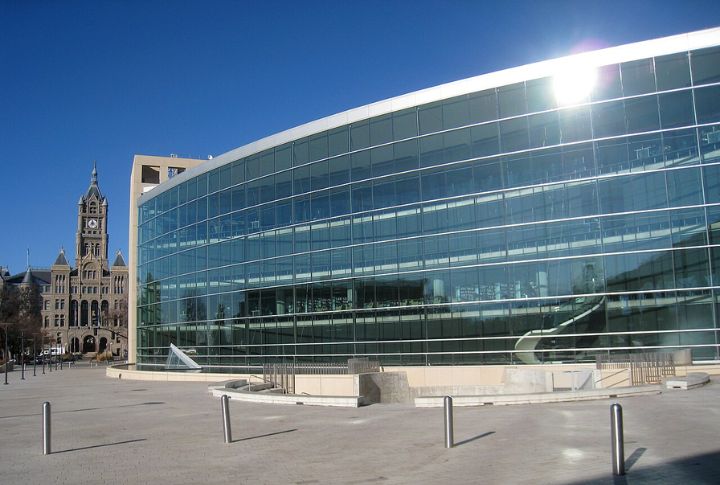
Curved glass walls and a rooftop garden set this 2003 architectural marvel apart. This five-story building wraps around a bustling public plaza and encourages exploration through its spiraling layout. Inside, over 500,000 items are housed across open, sunlit spaces. The rooftop terrace grants visitors spectacular views of the Salt Lake Valley.
Indianapolis Public Library, Central Library (Indianapolis, Indiana)
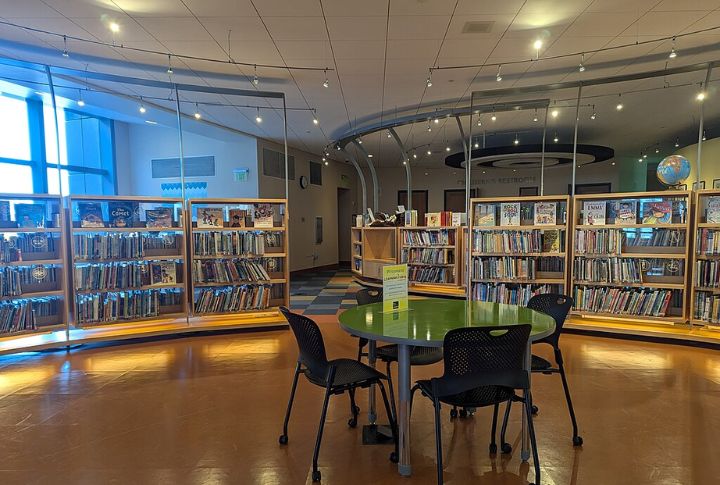
This facility fuses a stately 1917 limestone building with a soaring glass-and-steel addition, merging classical and contemporary styles. The six-story atrium connects old and new, offering a dramatic space for events and everyday reading. Its collection exceeds 2 million items, including local history archives. A glowing glass ceiling crowns the building’s architectural centerpiece.
Phillips Exeter Academy Library (Exeter, New Hampshire)
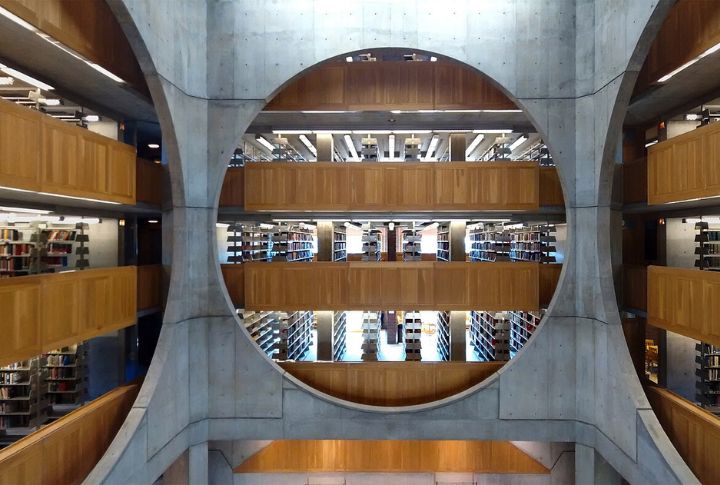
Few high schools like Exeter can claim a library designed by a modernist master. Louis Kahn’s 1971 creation uses exposed concrete and precise geometry to create a meditative space. Its central atrium soars four stories, wrapping readers in light and symmetry. With over 160,000 volumes, it’s also an architectural case study.
Houghton Library (Cambridge, Massachusetts)
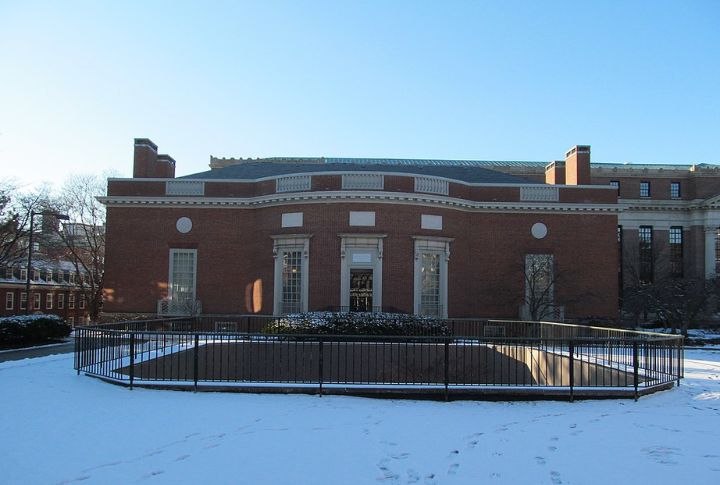
Houghton Library opened in 1942 as the nation’s first purpose-built rare book library. Scholars can access early editions of Shakespeare, letters from Dickinson, and illuminated manuscripts. It also houses one of the world’s most comprehensive collections of early printing history. The space balances marble elegance with dark wood intimacy.
The Ransom Center (Austin, Texas)
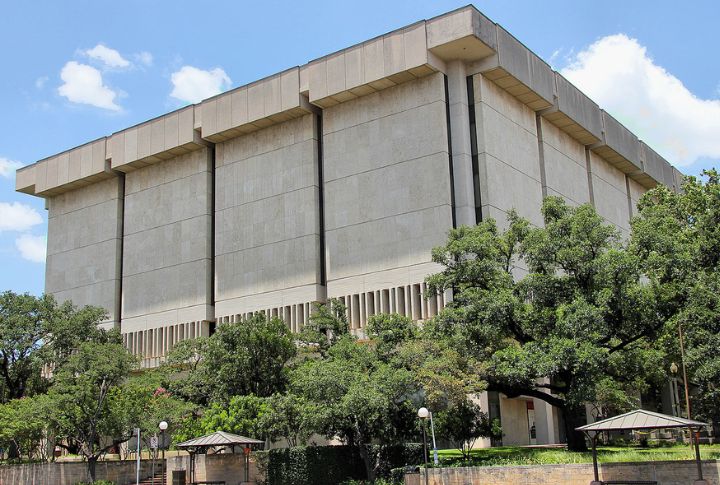
The University of Texas’ Harry Ransom Center houses one of the country’s most remarkable collections of cultural artifacts. Its sleek design includes climate-controlled archives and public galleries. Among its treasures are the world’s first photograph and manuscripts by Joyce, Woolf, and Garcia Marquez. Exhibits rotate frequently, drawing scholars and visitors alike.
Providence Athenaeum (Providence, Rhode Island)
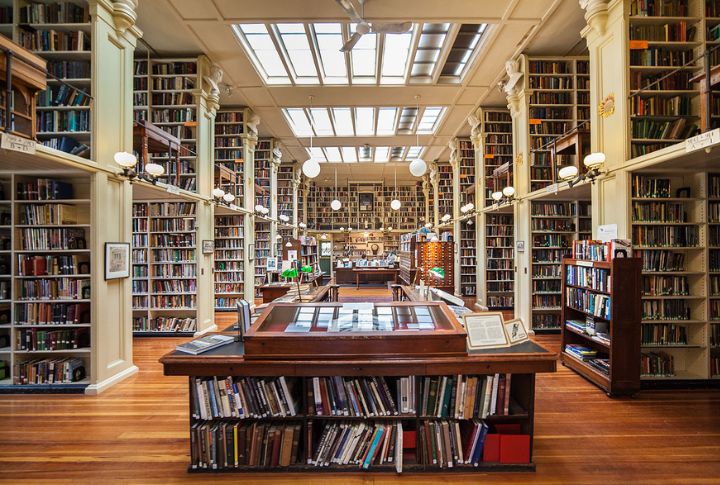
One of the oldest libraries in America, the Providence Athenaeum exudes historic charm and literary legacy. Edgar Allan Poe once courted Sarah Helen Whitman here, adding a romantic footnote to the 19th-century origins of the area. The Greek Revival architecture and winding staircases create a warm, scholarly atmosphere.
Kansas City Public Library, Central Library (Kansas City, Missouri)
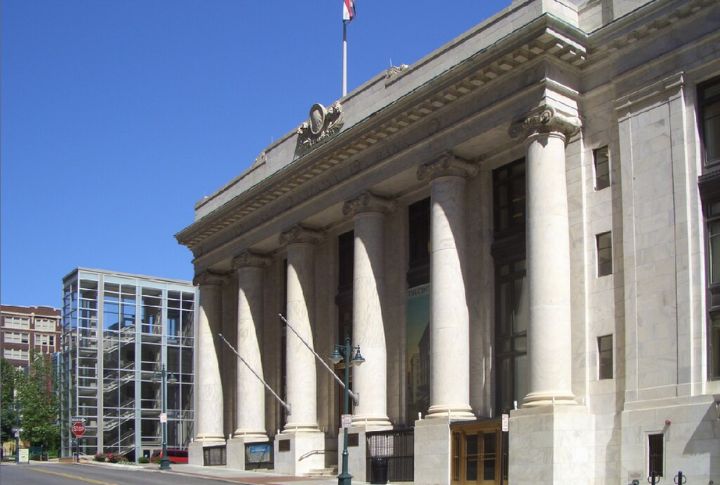
You can’t miss its parking garage—it’s famously disguised as a giant bookshelf featuring classic titles. The main building, a 1906 former bank, houses a theater inside the old vault and ornate halls with marble columns and stained glass. Inside, exhibits and reading rooms span multiple levels.
Milwaukee Central Library (Milwaukee, Wisconsin)
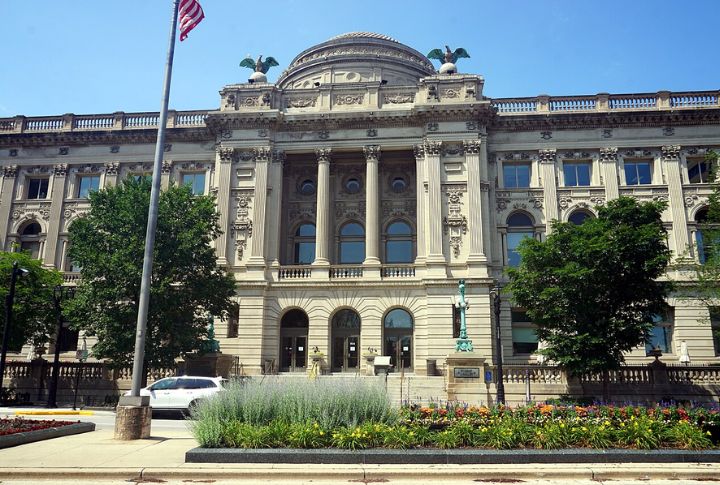
Since 1898, this grand limestone building has served as Milwaukee’s flagship public library. Its neoclassical dome and glass-floored stacks highlight the architectural elegance of the era. A special collections room showcases rare books, historic maps, and early Wisconsin ephemera. The original structure once housed the Milwaukee Public Museum on its upper floors.
Detroit Public Library (Detroit, Michigan)
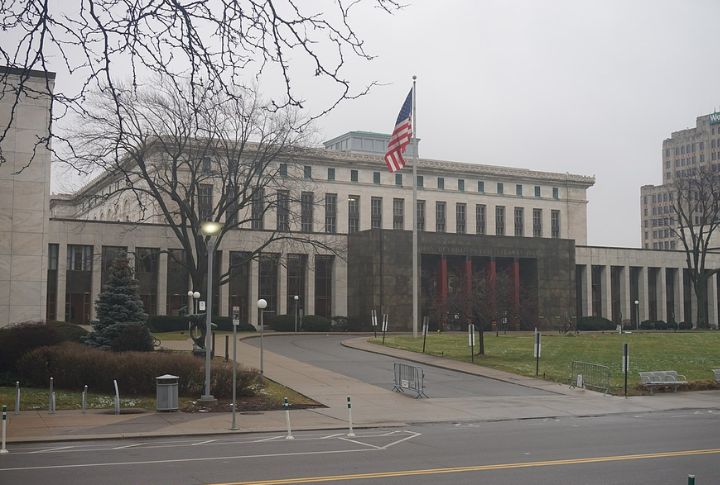
Opened in 1921, the Detroit Public Library is a stunning example of Beaux-Arts architecture. Ornate marble halls feature murals by celebrated artists and a vast collection of over 5 million items. The Main Branch’s grand entrance and the Rivera Court, adorned with vibrant frescoes, make it a must-visit cultural treasure in the heart of Detroit.
The American Philosophical Society Library (Philadelphia, Pennsylvania)

This institution is among the oldest scholarly libraries in the U.S. and was founded by Benjamin Franklin in 1743. It preserves early American scientific works and journals from the Lewis and Clark expedition. The Georgian-style building sits steps from Independence Hall. Intending users must apply for access to its historical treasures.
William Oxley Thompson Library (Columbus, Ohio)

The William Oxley Thompson Library is located at the heart of Ohio State University. Its Grand Reading Room features arched windows and towering shelves beneath a 30-foot ceiling. The facility also houses a rare map room and a permanent university history exhibit. A renovation in 2009 added digital labs and glass walkways.
North Adams Public Library (North Adams, Massachusetts)
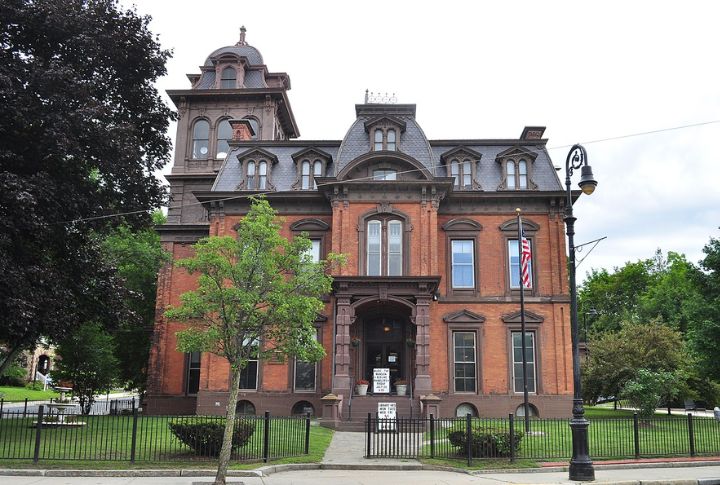
Originally a private Victorian mansion, the North Adams Public Library is now a welcoming civic landmark. Though built in 1865, the structure retains intricate woodwork, stained glass windows, and marble fireplaces. The facility’s hilltop location grants impressive perspectives of the surrounding mountains.
The New York Society Library (New York, New York)
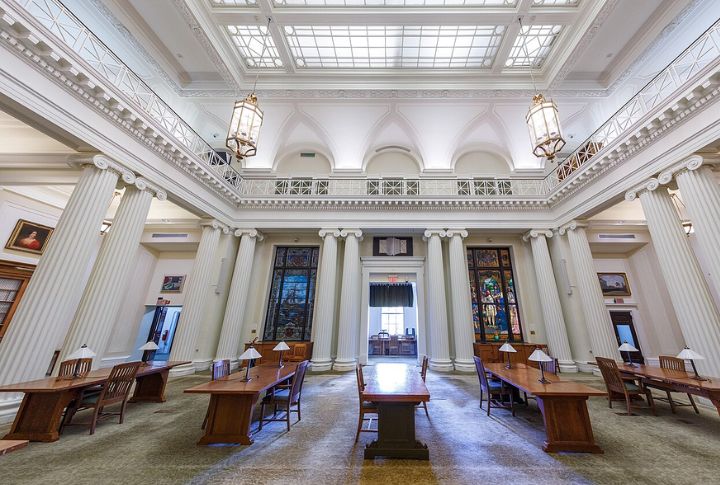
This infrastructure was established in 1754 and is New York City’s oldest library. Housed in a historic townhouse on the Upper East Side, it features historic portraits and a literary atmosphere cherished by scholars and locals alike. Its elegant setting offers a glimpse into early American literary culture.
Carnegie Library (Pittsburgh, Pennsylvania)
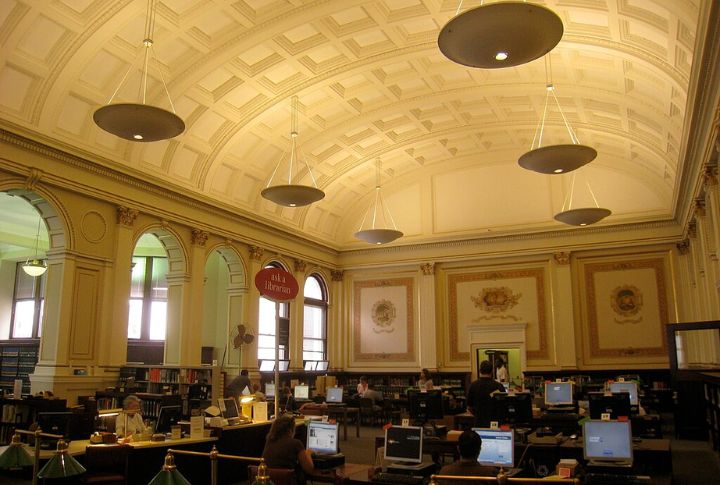
Built in 1895, the Carnegie Library in Pittsburgh was the first Carnegie Library in the United States and a pioneering model for public libraries nationwide. Its Beaux-Arts style features sturdy stonework, arched windows, and grand reading rooms. This structure is a cultural landmark in Pittsburgh, reflecting Andrew Carnegie’s vision of accessible education and beauty in public spaces.

